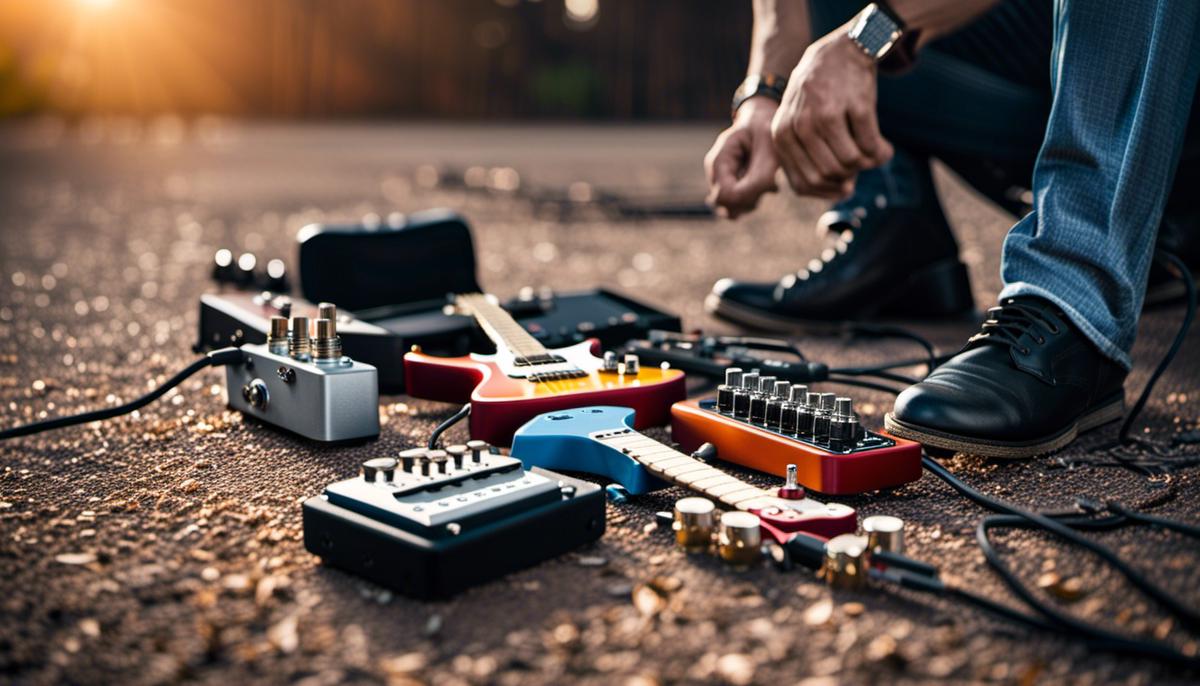
The electric guitar has been an instrumental part of music spanning across several genres, from rock and roll to blues, jazz to country. An integral part of this instrument’s transformative power lies in the guitarist’s skillful use of guitar pedals. These small devices are the unsung heroes that shape, evolve, and metamorphize the raw, electric sound of the guitar into something truly magical and mesmerizing, punctuating a song with individuality and flair. In this exploration, we delve into the fascinating world of these magical devices, decode their functions, and guide you on choosing the right one for your unique soundscapes.
Understanding Guitar Pedals
Understanding Guitar Pedals: What Are They?
Guitar pedals, often referred to as stomp boxes, are devices that alter the sound produced by electric guitars. Operated with the foot during performance, these pedals transform the guitar’s signal before it reaches the amplifier, thereby modifying the output sound. Guitar pedals are essential as they offer guitarists the flexibility to enhance their tones, adding depth and character to the music.
How They Function
Guitar pedals function by taking the electric signal from a guitar and distorting the sound in a specific way before sending it on to the amplifier. When the guitar’s signal enters the pedal, it is manipulated by the pedal’s circuitry to create the desired effect. From minimal tweaks to radical adjustments, the possibilities presented by different guitar pedals are nearly endless. However, understanding the knobs, switches, and buttons on each of these devices is vital to mastering their effects.
Brief History of Guitar Pedals
Guitar pedals made their commercial debut in the 1960s, with the likes of the Maestro Fuzz-Tone. Artists like Jimi Hendrix and Keith Richards quickly adopted them, making these devices an integral part of rock music culture. Over time, more varieties of guitar pedals were released, turning these tools into the diverse and multifaceted devices they are today.
Types of Guitar Pedals
The most common types of guitar pedals include distortion, overdrive, delay, and reverb pedals. Distortion pedals modify the sound wave, creating a heavier, grittier tone. Overdrive pedals, on the other hand, mimic the natural sound of an amp cranked up, providing a warm and smooth modification. Delay pedals repeat the guitar’s signal at varying intervals while reverb pedals add layers of echoes to replicate the ambience of playing in different environments.
Guitar Pedals and Music Genres
Different guitar pedals are often associated with different music genres due to the sonic character they impart. For instance, distortion and overdrive pedals are fundamental in rock and metal music, often used to create powerful and gritty riffs. Meanwhile, delay and reverb pedals are prevalent in genres like ambient or shoegaze, offering spaciousness and texture to the musical landscape.
Top-Rated Guitar Pedals
Guitar pedal choice is a highly personal decision and greatly depends on the guitarist’s style and preference. However, a few guitar pedals such as the Boss DS-1 Distortion, Ibanez TS9 Tube Screamer, and TC Electronic Flashback Delay are universally acclaimed by many musicians. The Boss DS-1 is known for its versatile and bold tones, allowing it to be used across various genres of music. The Ibanez TS9 Tube Screamer is a favorite among blues and rock guitarists due to its warm and creamy distortion. TC Electronic Flashback Delay, on the other hand, is lauded for its versatility and sound quality, making it popular among many guitar players.
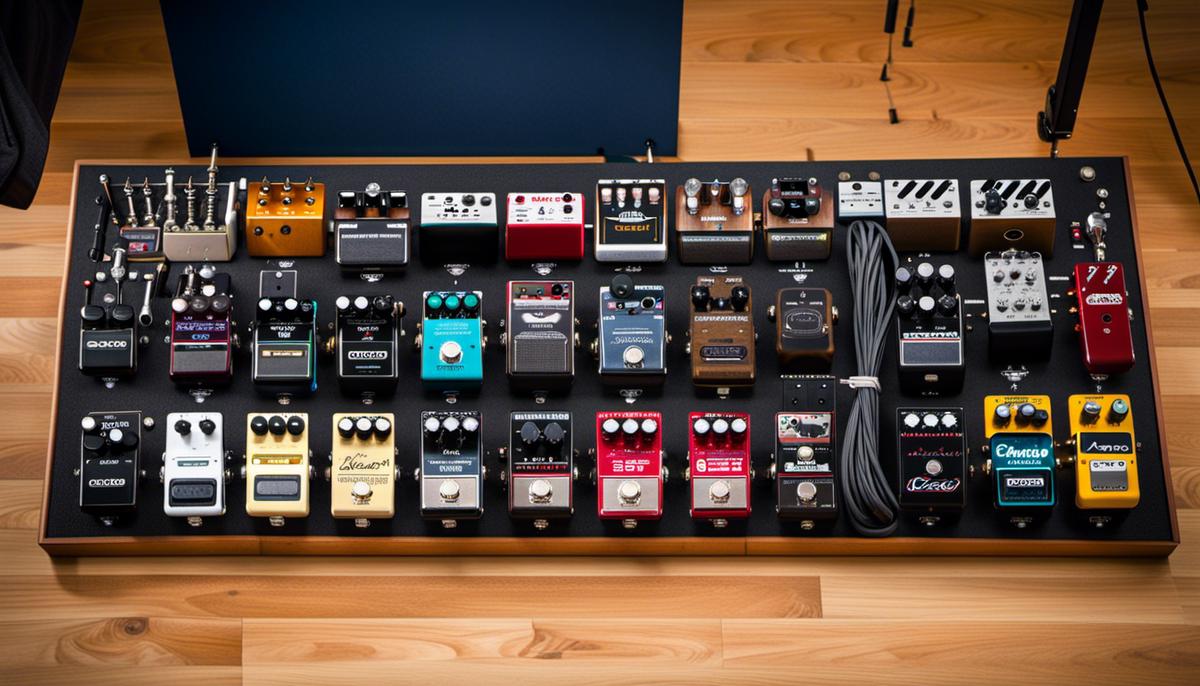
Top-Rated Guitar Pedals
Sound Quality: Expert Picks
Sound quality preferences are highly unique and individual, but there are guitar pedals that consistently excel in audio performance as per expert reviews. The Ibanez TS9 Tube Screamer, for instance, is often hailed as one of the best in terms of distortion and tonal quality due to its smooth response and warm overdrive. The Strymon BigSky Multidimensional Reverb stands out in the reverb category because of its diverse tonal abilities and the rich, expansive ambiance it can create. Meanwhile, when it comes to delay effects, the Boss DD-500 Digital Delay is preferred by many for its crisp repeat functions and easy-to-use interface.
Durability: Long-Lasting Performance
For touring musicians or anyone putting their gear through heavy use, durability is a crucial factor in choosing a guitar pedal. The MXR M169 Carbon Copy Analog Delay is built like a tank and designed to withstand years of use, while the shimmering sounds it produces remain uncompromised over time. The Electro-Harmonix Metal Muff with Top Boost, favored for its sharp, expansive distortion, also boasts a sturdy metal casing that resists even the toughest knocks.
Pedal Types: Choosing Your Sound
Although all guitar pedals modify the signal from your guitar in some way, they can be broadly categorized into several different types. Overdrive/distortion pedals, like the aforementioned Ibanez TS9 Tube Screamer or the Fulltone OCD, add gain to your signal to create a crunchy, powerful tone. Modulation pedals such as the Boss CH-1 Super Chorus or the EarthQuaker Devices Aqueduct Vibrato shift the pitch, phase, or other elements of your sound for a more textured effect. Meanwhile, delay/reverb pedals like the TC Electronic Hall of Fame 2 produce echoes and ambience, adding depth and space to your sound.
Cost-Effectiveness: Quality Within Your Budget
When evaluating a pedal’s cost-effectiveness, it’s important to consider not just its price, but also the quality and versatility of the sounds it can produce. The Behringer Vintage Tube Overdrive TO800, for example, is an inexpensive but highly rated pedal that delivers classic, tube-like distortion. The Zoom G1X Four Multi-Effects Processor, though considerably more expensive, offers an enormous range of sound possibilities with over 70 built-in effects, giving beginner guitarists access to a wide range of sounds at a relatively modest price.
Enhanced Features: Bonus Delights
For those prepared to invest in added features, the TC Electronic Flashback 2 introduces TonePrint, enabling musicians to formulate and exchange their unique customized settings. Further upping the game is Line 6 HX Stomp, which serves as an all-in-one pedalboard with integrated amplifier modeling, multi-effects functionality, and a user-friendly touch screen interface for quick modifications. If a loop station is under your requirement list, the Boss RC-1 Loop Station is a breeze to operate with an impressive recording time of up to 12 minutes.
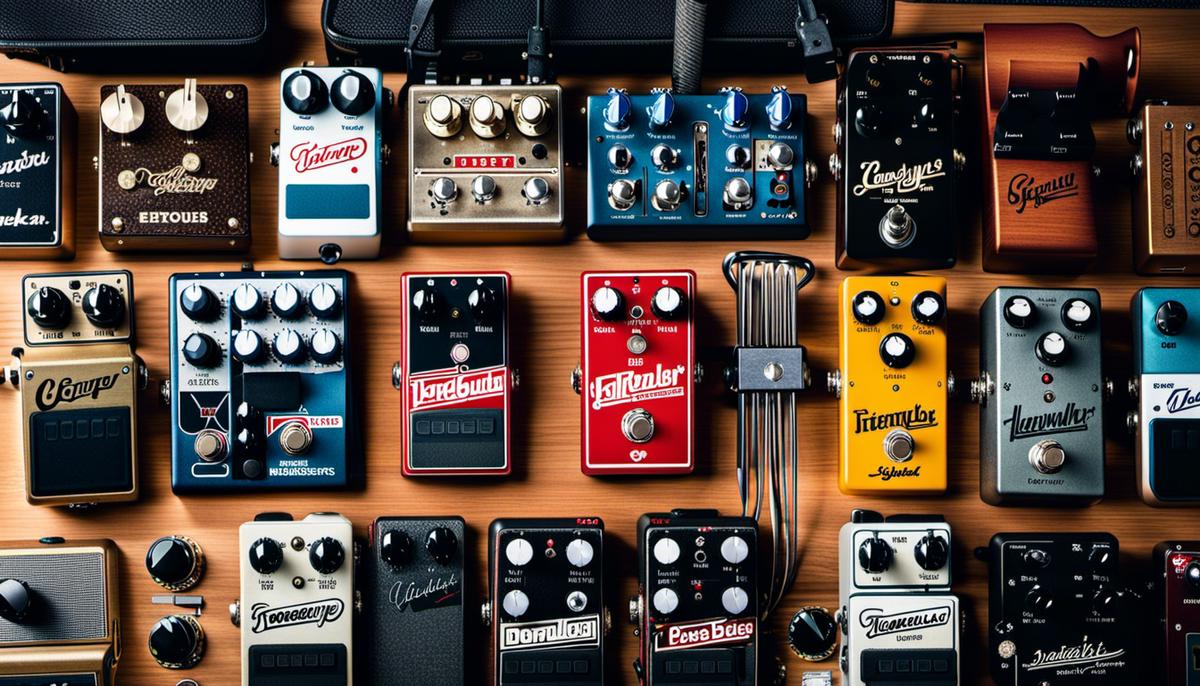
How to Choose a Guitar Pedal
Deciphering the Tone You Aim to Produce With a Guitar Pedal
Understanding the specific tone you desire to produce is a crucial step before selecting a guitar pedal. Guitar pedals, which are effects units, modify the sound of your guitar in diverse methods, with each pedal type leading to a unique effect. For instance, if your aim is a grunge or hard rock tone, you might look into distortion or overdrive pedals that intensify the signal. On the other hand, if you wish to mimic playing in a larger venue, delay or reverb pedals might be your pick as they bring in space and atmospheric influence. Condensing pedals enhance your guitar’s sound, bringing in consistency, while octave pedals have the potential to adjust your guitar’s pitch and give an illusion of playing multiple notes simultaneously.
Compatibility of the Pedal with Your Guitar Model
Another factor to consider when choosing a guitar pedal is whether it is compatible with your guitar/model. Not all pedals work properly with all types of guitars due to differences in electronic characteristics and setup. Evaluate your instrument’s features and configurations and ensure that the pedal’s specifications match them. You may consult your guitar’s manual or enlist the help of musical techs in determining compatibility.
Budget Considerations
Budgetary constraints are also a significant consideration when choosing a guitar pedal. While some pedals can be quite expensive, there are also many quality, budget-friendly options available. However, keep in mind that different pedals will provide varying sound effects and quality. More expensive models typically offer more sophisticated features, such as built-in equalizers or multiple effects within the same unit.
Single Effect Pedals versus Multi-Effect Pedals
Before making a final decision, you should also weigh the pros and cons of single effect pedals versus multi-effect pedals. Single effect pedals typically specialize in producing one type of sound effect. They are known for their excellent sound quality and easy-to-use format. On the other hand, multi-effect pedals contain multiple sound effects within one box. They offer a broad range of customization options and can often save space and money compared to purchasing multiple single effect pedals. However, they can also be more complex to use, and some users believe they sacrifice some sound quality for versatility.
Importance of Reviews of Top-rated Pedals
Lastlines Updated
Lastly, consider reviews of top-rated pedals. These reviews can provide insight into the pedal’s performance, sound quality, and ease of use, among other things. They can also give you a realistic idea of what to expect from the pedal, beyond what the manufacturer’s specifications claim. Remember, the best pedal is not necessarily the most expensive one, but the one that best suits your specific needs as a guitarist. Use the reviews to identify the options that seem to best fit your specific requirements.
Considering the specific sound you’re trying to create, compatibility with your guitar, your financial plan, and the most suitable type of pedal for your requirements are all crucial aspects when choosing a guitar pedal. Using customer feedback and reviews of top-rated pedals can be beneficial in finalizing your decision.
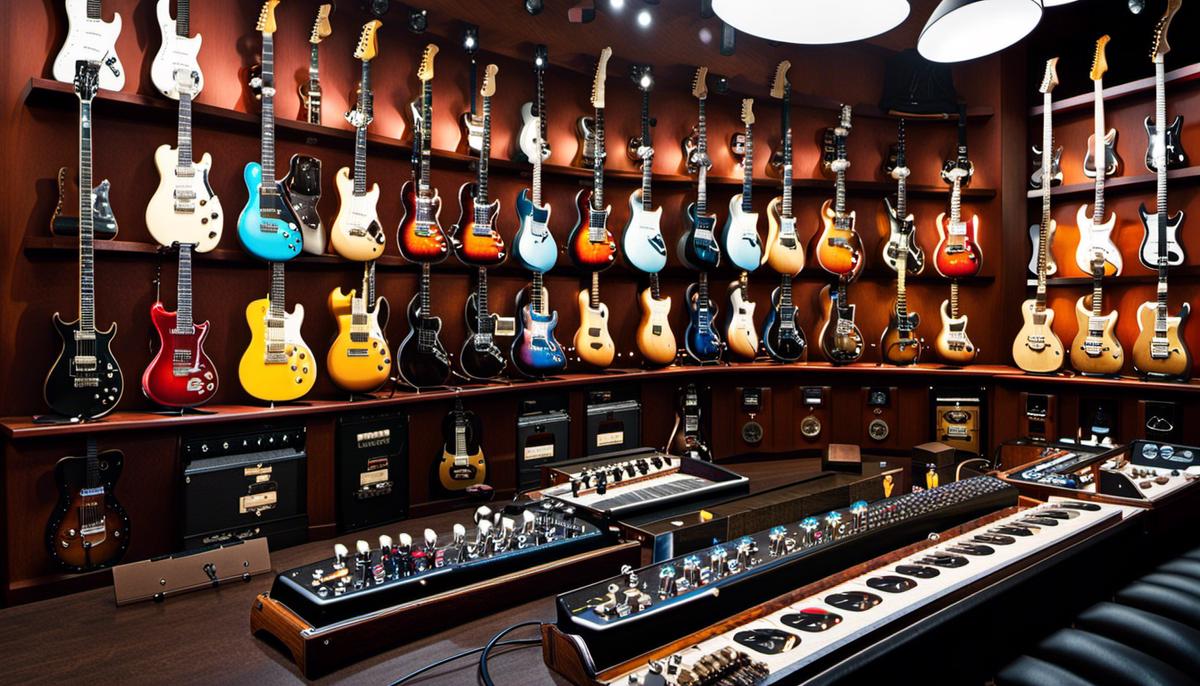
Tips for Using Guitar Pedals
Getting to Know Guitar Pedals: A Comprehensive Guide
Guitar pedals are key components for bringing distinctive tones to life and enhancing your overall sound. They serve up a variety of effects from distortion and delay to reverb and modulation. To fully harness the abilities of these pedals, it’s crucial to understand their operation, setup, and maintenance.
Pedal Positioning: Chain of Effects
The order in which guitar pedals are positioned greatly influences the overall sound produced. Typically, the recommended order of arrangement is tuner, wah, compression, pitch, distortion, modulation, volume, delay, and finally, reverb. However, feel free to experiment and find the arrangement that suits your desired tonal output best.
Level Adjustments: Finding the Right Balance
Adjusting levels on guitar pedals is pivotal to balancing various effects. For instance, too much gain may lead to an overly distorted and thick sound. Namely, if your distortion pedal level is too high, the sound may crackle or become unclear. A rule of thumb is to start with all the knobs at the midpoint and adjust incrementally to find your desired balance.
Tone Settings: Craft Your Signature Sound
Every guitar pedal comes with multiple tone settings, giving you control over a variety of sound traits. Depending on the pedal, you may control elements like EQ, decay, saturation, wet/dry mix, etc. The creation of a signature sound often depends on delicate tweaks to these settings.
Pedal Maintenance: Secure optimal Performance
Regular maintenance of your guitar pedals assures they remain in top shape for a long time. Make sure you keep them clean and free from dust. Avoiding extreme temperatures and protecting them from physical shocks can also greatly enhance their lifespan.
Learn from The Greats: Pedal Settings of Famous Guitarists
Understanding and replicating the pedal settings of famous guitarists can be a stepping stone in your guitar journey. For instance, U2’s The Edge is renowned for his use of delay, often setting his Digital Delay Pedal to a dotted eighth note. Similarly, Jimi Hendrix famously employed a fuzz face distortion pedal to produce his iconic psychedelic blues-rock sound. While emulating these setups can be a learning experience, remember to adapt and add your touch to create your signature sound.
Experimentation: The Key to Mastery
While understanding the operational aspects of guitar pedals is fundamental, becoming adept at their use requires experimentation. The limitless combinations of pedal chains, levels, and tone settings promote endless sonic possibilities. Consequently, keep exploring, testing, and tweaking until you find the sound that expresses your musical essence the best.
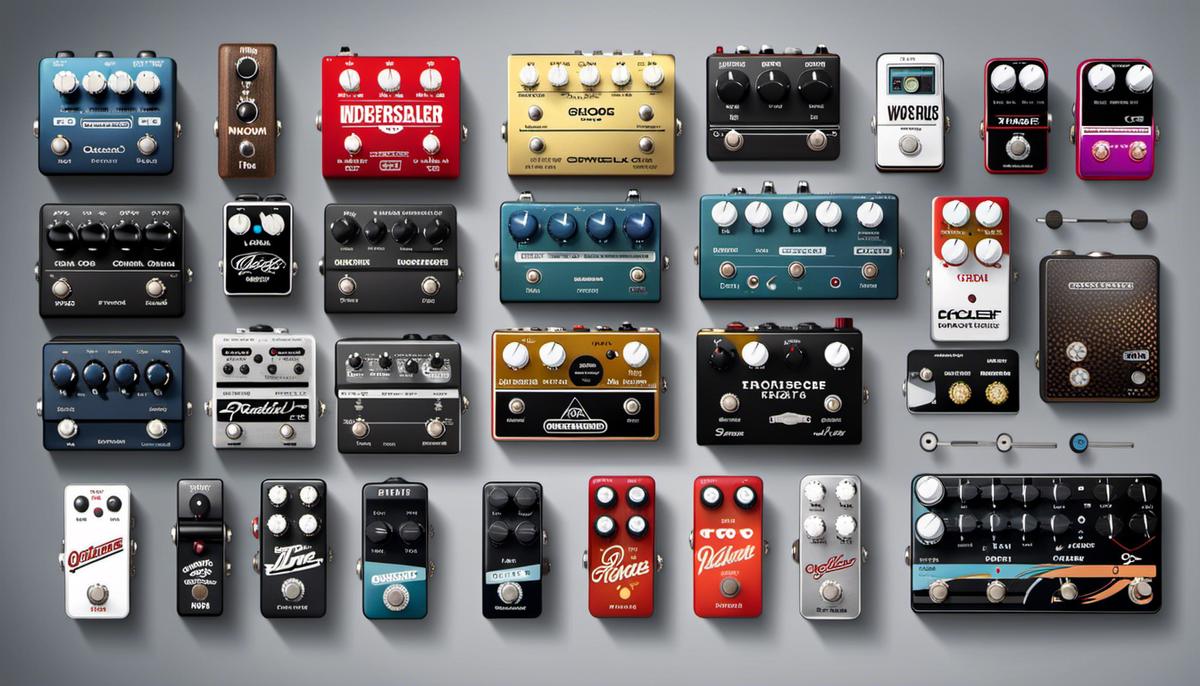
Mastering the art and science of guitar pedals takes patience, practice, and a keen ear for detail. While it can be an overwhelming expedition, especially for beginners, the harmonious marriage between the right pedal and the right guitar can lead to an audible paradise. With the knowledge of what guitar pedals are, their history and functionality, coupled with the tips to choose the perfect one and use it effectively, you are now equipped to embark on this incredible sonic journey, shaping and coloring your guitar sound like the masters. Here’s to creating music that is artfully yours, echoing the depth and complexity of your unique musical expression.
Comments are closed.